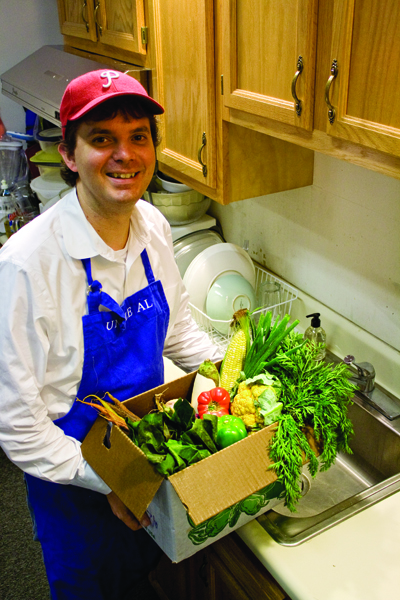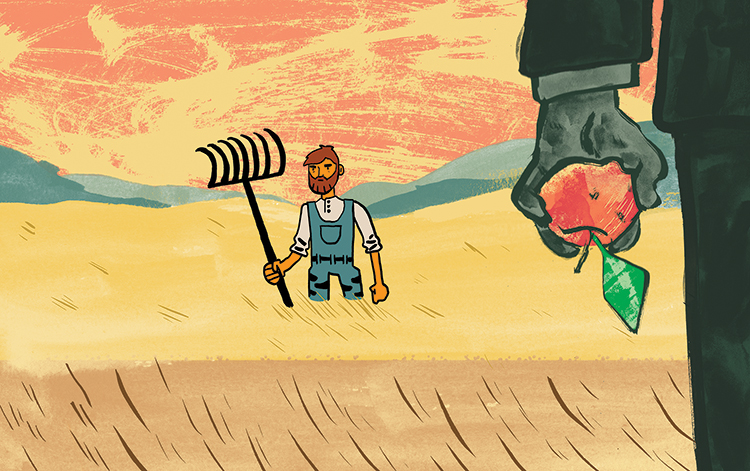 It’s August and the full splendor of the CSA is upon us. For the uninitiated, CSA stands for Community Supported Agriculture. (This acronym is somewhat obtuse. I would suggest replacing it with BFF, Buying From a Farmer.) The way it works is you sign up before the farmers’ harvest, usually in the late winter or early spring, and then you receive a weekly subscription to their fresh fruits and vegetables that you pick up at a location in your neighborhood.
It’s August and the full splendor of the CSA is upon us. For the uninitiated, CSA stands for Community Supported Agriculture. (This acronym is somewhat obtuse. I would suggest replacing it with BFF, Buying From a Farmer.) The way it works is you sign up before the farmers’ harvest, usually in the late winter or early spring, and then you receive a weekly subscription to their fresh fruits and vegetables that you pick up at a location in your neighborhood.
This turns the cooking paradigm on its ear, or at least it has for me. Typically, I would search for a recipe that looked interesting and then shop for the ingredients. With a CSA, you get the ingredients first, dealt to you like a hand of cards, and then you need to quickly figure out what’s for dinner.
The weekly challenge has stretched my vegetable vocabulary considerably. Veggies that I would not have had the courage to look in the eye at the market are now my friends. Beets, cabbage, kale and rainbow chard no longer intimidate me; in fact, they thrill me.
That said, there have been some failures. In the very first share I received, there was a batch of unfamiliar red and green stalks: rhubarb! Why I panicked, I don’t know, but I did. I planned to foist these alien antennae on to my girlfriend and let it be her problem. Days passed, the rhubarb slipped from my mind, and it died a lonely death in my refrigerator. The very fruit-impersonating vegetable that Barbara Kingsolver praises as her family’s salvation in this month’s Grid Classic book (page 28) Animal, Vegetable, Miracle had been carelessly neglected.
Five weeks later, much to my relief, the mysterious stalk returned to my CSA box. It was time for some rhubarb redemption. My girlfriend suggested a compote, which was shockingly simple. Chop up the stalk, sauté it over medium heat with some red wine and sugar, remove the rhubarb after seven minutes, boil the wine and sugar until it’s a little thicker, then pour the sauce on the rhubarb. We used this glorious compote to top our French toast. Mmmm!
I’m always imagining the perfect version of my life—or in this case, my diet—and it’s frustrating to fall short. Along the way, some leafy greens turn into slimy browns, despite my best intentions. But, with each vegetable that is demystified and learned, a gap is filled, and I get one step closer.
If there’s something we want Grid to do, it’s to encourage people to try. You can be a beekeeper (pages 8–9); you can shop secondhand (16–17); you can cook with seasonal produce (22–26); you can be part of the city’s metamorphosis. It will take time, and the failures are necessary to fuel the successes.
Eighteen years ago, 10 people met in New York City to discuss a bike path that would run the entire length of the Eastern Seaboard. A fool’s errand, right? Now the East Coast Greenway (pages 18–21) has over 600 miles of paths, about 22 percent of the total trail. With the news that bike lanes are being planned to run through Pine and Spruce Streets, Philadelphia is taking one step closer to the city we want it to be.
There has never been a better time or place to dream big. What will you do this month to live the life you imagine?
Alex J. Mulcahy
Publisher
alex@gridphilly.com



